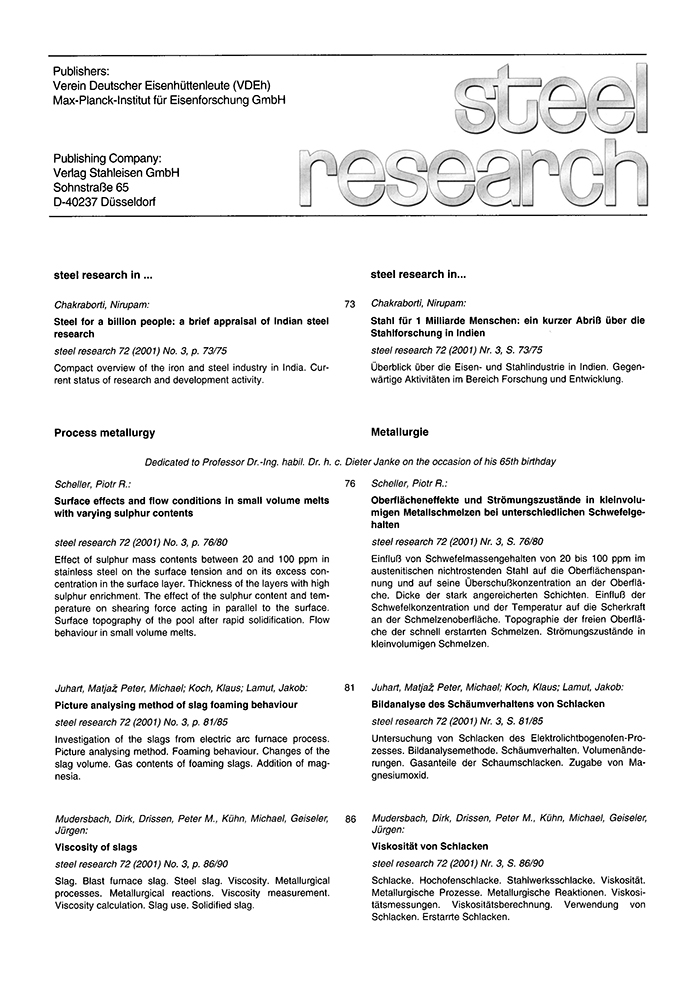Picture analysing method of slag foaming behaviour
Abstract
enHot tests of foaming behaviour of steelmaking slags were conducted on a laboratory scale up to 1760 °C using a Tammann furnace. The foaming behaviour of the slags was quantified on the basis of a new measuring method. The volume increase and the progress of the foaming process can be continuously observed and calculated by means of picture analysis. The gas content of foaming slags was compared with the results of the measurements performed in steel plants. The influence of the magnesia content on the foaming behaviour is investigated. The chemical composition of the slag is beside the CO evolution the decisive factor influencing slag foaming behaviour. The highest volume increase values observed lie in the region of 2500 % in relation to the initial volume.
Abstract
deBildanalyse des Schäumverhaltens von Schlacken. Laboruntersuchungen zum Schäumen von Stahlwerksschlacken sind in einem Tammannofen bei Temperaturen bis zu 1760 °C durchgeführt worden. Das Schäumverhalten der Schlacken wurde mit einer neuen Meßmethode quantifiziert. So sind die Volumenänderungen kontinuierlich beobachtet und berechnet worden. Der Gasanteil der Schaumschlacken wurde mit entsprechenden Werten von betrieblichen Untersuchungen verglichen. Der Einfluß des MgO-Gehaltes auf das Schäumverhalten wurde bestimmt. Die chemische Zusammensetzung der Schlacken ist neben der CO-Entwicklung ein entscheidender Faktor für das Schäumverhalten. Die höchste beobachtete Volumenzunahme beträgt rd. 2500 %, bezogen auf das Anfangsvolumen.




